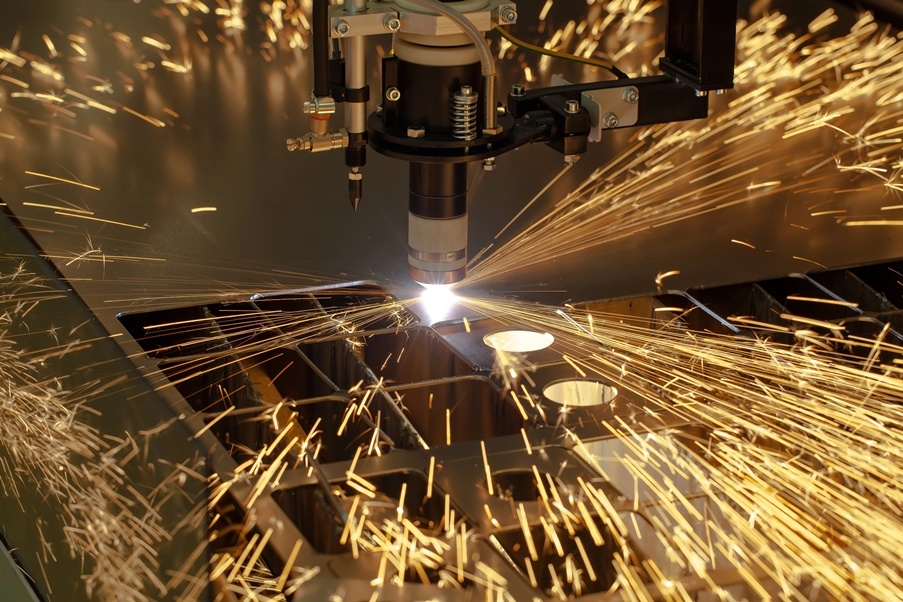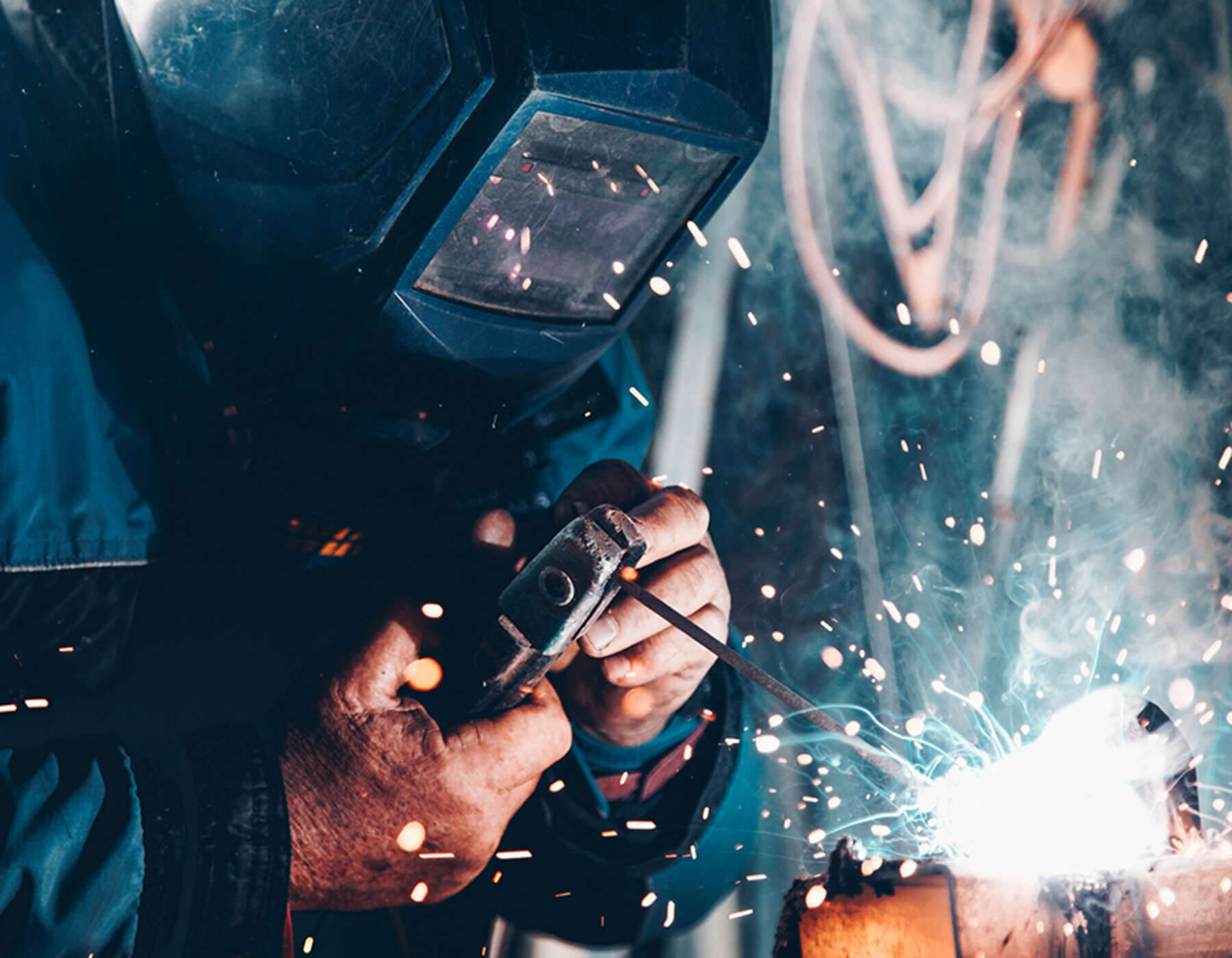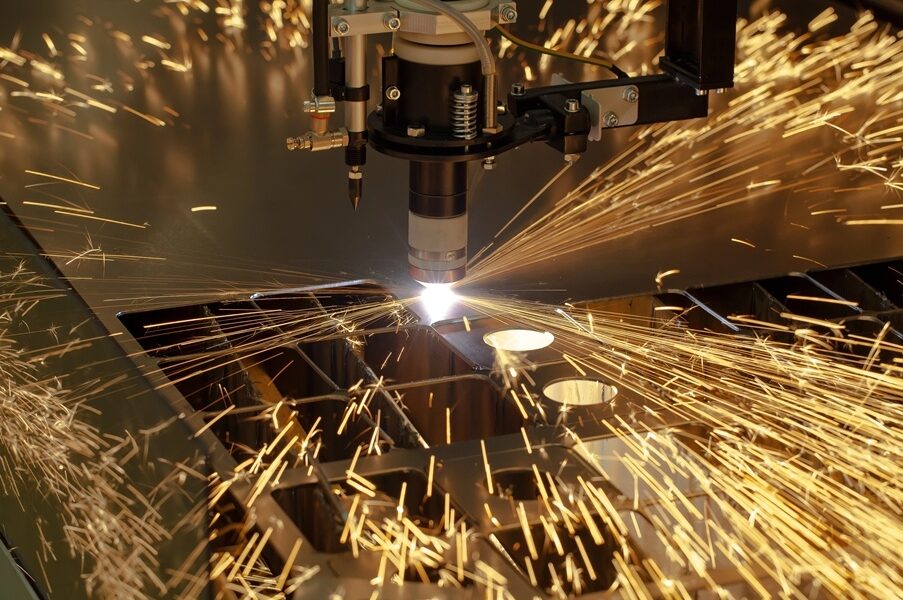
Cutting metal is a big part of fabrication, as most materials we work with, from aluminium to copper and steel, come in metal sheets.
This means that once the CAD designs are confirmed, we will work with the chosen sheet metal to manufacture the finished product, which will inevitably require a cutting technique to achieve the desired dimensions and specifications.
One such technique is metal plasma cutting, and in this post, we look at what plasma cutting is and some of the advantages and disadvantages of opting for this process above others.
Plasma cutting definition
A high-tech cutting method that uses ionised and focused gas jets to slice through sheet metal easily.
Plasma is an electronically conductive ionised gas-like substance that professional sheet metal fabricators in the UK use to melt metal rather than use mechanical cutting methods.
Plasma cutting is a melting process that uses heat (temperatures above 20,000 degrees Celsius) and ionised gas to produce an arc/jet that is then placed on the metal and moved down the metal to create the cut by melting away the material.
The process starts when pressure in the equipment and tooling begins to build, creating an electric arc that we then strike between the workpiece and the electrode; the metal fabricator will hold the gun and position the nozzle over the material, where a narrow, high-temperature, and high-velocity plasma jet forms and melts the metal.
The sheet metal will be clamped into position, and the plasma torch will move across the material, melting away parts to achieve the cuts.
A thermal cutting sheet metal fabrication method that uses ionised gases to cut various metals. The plasma cutting process is widely used on thicker metals, allowing you to achieve a high-quality, precision cut.
Advantages and disadvantages of plasma cutting
The advantages of opting for this type of cutting technique are:
- You can cut a range of conductive materials
- You can still achieve a high-quality cut even in thicker materials (maximum thickness is 150mm)
- Plasma cutting is an extremely cost-effective process
- Can achieve curves, odd shapes, and intersecting cuts
- Plasma cutting can be manual or programmed using computer-aided controls
- It is one of the best sheet metal services that allow you to cut standard density aluminium and stainless steel
- Fabricators can make use of CNC machinery for precision cuts
- Plasma cutting achieves clean, sealed cuts
- It is a process that is used in all industries because it is quick, accurate, and incredibly precise
- Versatile, flexible, and compatible with a range of materials such as copper, titanium, steel, and certain alloys
- Plasma-cutting tools and equipment are safe to use and operate
- Plasma cutting is reliable, repeatable, and a reasonably quick process.
So you can make the most informed decision for you, it’s important to be aware of some of the downsides of plasma cutting too.
Disadvantages of this cutting technique:
- Quality can sometimes be lost in thinner sheets due to the force of the plasma cut on the material. (However, due to continuing advances in equipment technology, there is now a high tolerance plasma arc cutting technique available, which provides a higher quality cut on materials with a density of less than 12mm.)
- Tolerances aren’t as precise as what you can achieve with laser cutting.
- Plasma cutting can be a noisy process, so it’s essential that you have the right PPE in place during the fabrication process. This type of cutting can also create bright flashes and sparks, and again, the appropriate PPE must be worn at all times.
- Laser cutting is preferred for thinner sheet metal and plates as a higher quality cut with fewer burrs can be achieved.
- In some instances, plasma cutting can leave a HAZ.
- You may also experience a wider kerf than laser cutting, so it must be built into the specifications if you opt for this cutting technique.
Why work with Morfabrication
As a family-run business, we use our experience and expertise to provide our clients with the most cost-effective solutions, high-quality finished products, and a one-stop shop for all your fabrication needs.
We work across all industries, producing a wide range of metal fabrication products and projects.
Based in the Northeast, we operate across the UK and can support you with initial CAD designs, welding, cutting, CNC machining, profiling, finishing, delivery, and assembly.
Check out some of our recent case studies highlighting our latest work online.
Sheet Metal Fabricators UK
When choosing your cutting technique, you must take into account material type, thickness, and the final product/project.
Morfabrication will work with you and your specifications to identify the best fabrication service for you.
A quick and efficient process, we use plasma cutting at Morfabrication as it is a fast process that helps us to minimise the risk of metal abrasion, cuts made in error, and any distortion.
To find out more about our full range of services, visit our website or book a consultation today to discuss your project requirements with a member of our professional team.
Call 0191 816 2718 or email info@morfabrication.com.

